What To Look Out For - January 2019
January is a great month to get into trees! They are almost everywhere we look, or at least should be… But which are the best trees for wildlife? The answer partly depends on where you live. The soil type will influence how well certain species grow in particular parts of the country and this can in turn influence the wildlife of that area.
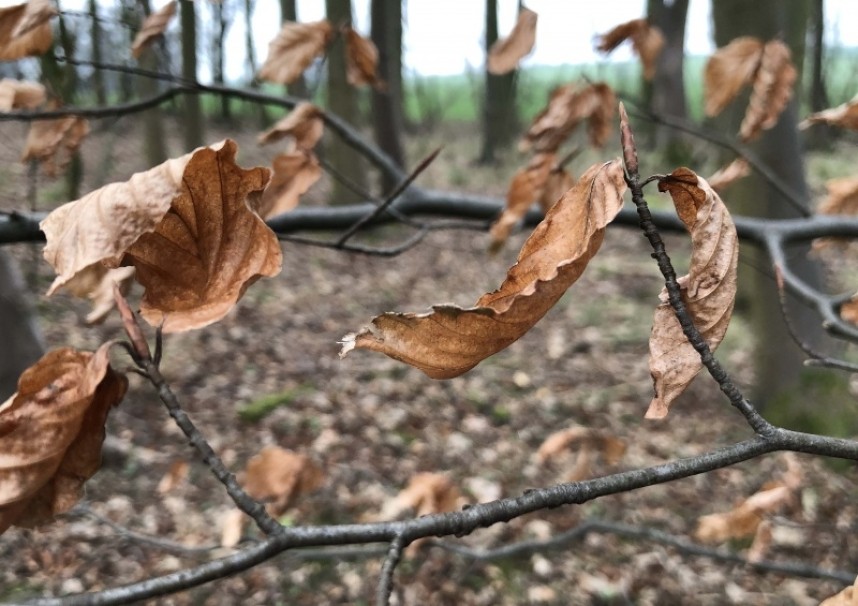
Beech Leaves copper curls with their long pointed fagus buds © Richard Baines
On the chalky land of East Yorkshire, Ash and Beech are well suited to the alkaline rich soils. I remember working in Millington Wood near Pocklington in East Yorkshire and never seeing an Oak Tree. Just over the border in North Yorkshire, Ash is less common but Silver Birch and Oak are very common trees and well suited to the deeper and often peat rich, more acidic soils.
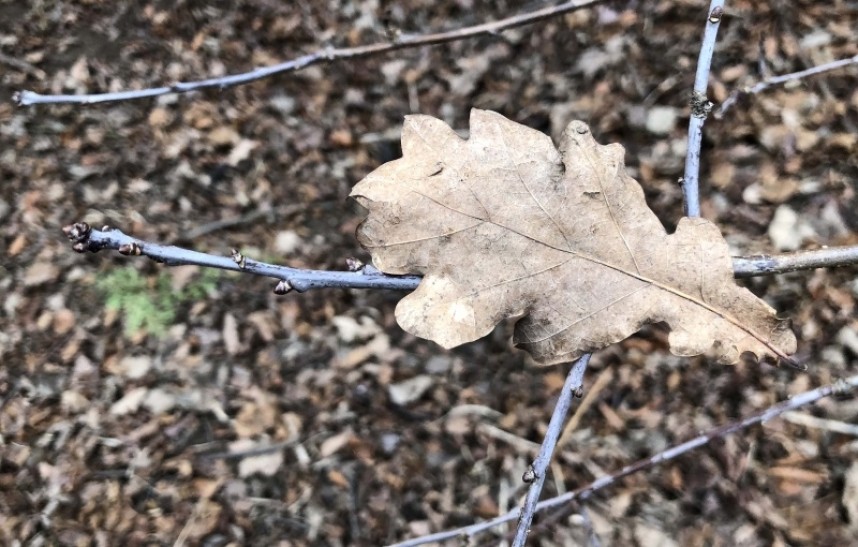
Oak leaf with the distinctive small dark buds grouped at the end of the stem © Richard Baines
Telling some of our commoner native trees apart in winter can be easier than you think. Its all about shape, colour and structure. Look carefully at the twigs, buds and bark. Oak trees have their buds arranged in an alternate structure running up a twig, often ending with several fat lumpy dark red-brown buds grouped together at the tip of the stem. The bark on the twig should be pale and smooth and often covered with tiny but easily seen paler spots.
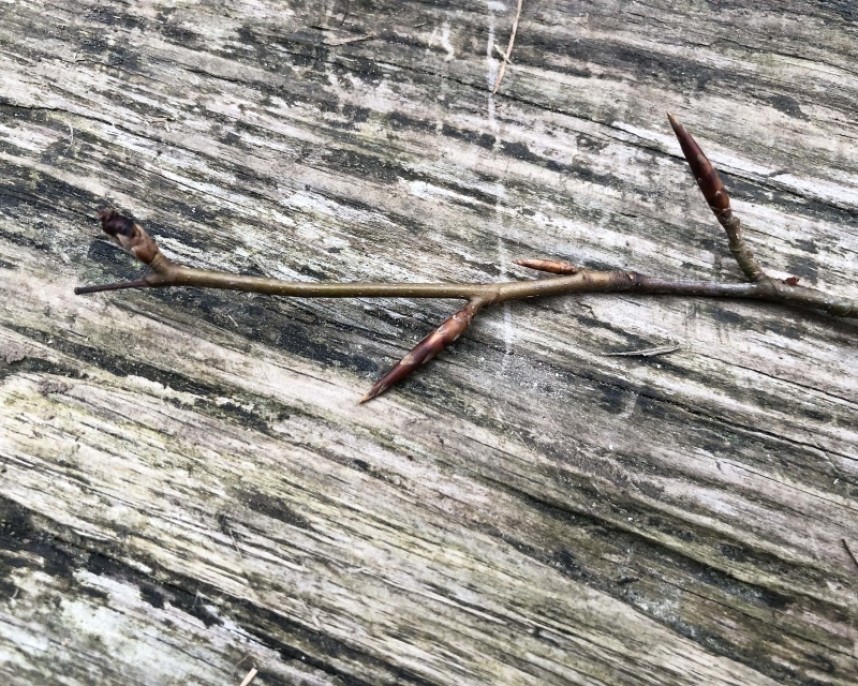
Beech buds © Richard Baines
Beech trees have very distinctively shaped buds, very different to other native trees, they are long and sharply pointed, arranged alternately up the stem in a gentle zig zag fashion. Their cigarette like structure helps me remember their Latin family name Fagus! The bark is grey and smooth even in a mature tree.
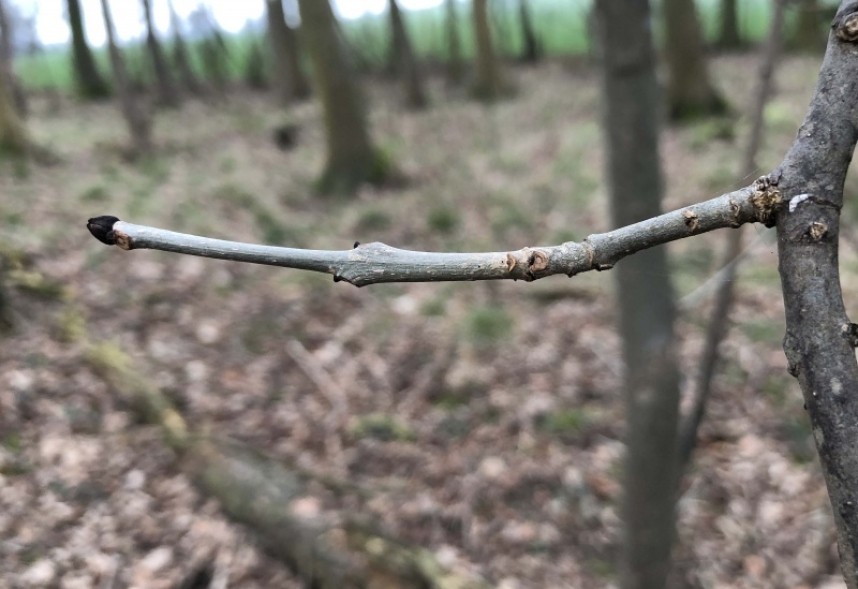
Ash buds jet black and smooth grey bark © Richard Baines
To identify an Ash tree in winter all you have to remember is; black Ash, black buds. The buds are arranged oppositely on a stem and often sit on a tiny shelf like structure growing out from the stem. The twig often ends with a larger black bud at the tip. The bark is grey and smooth.
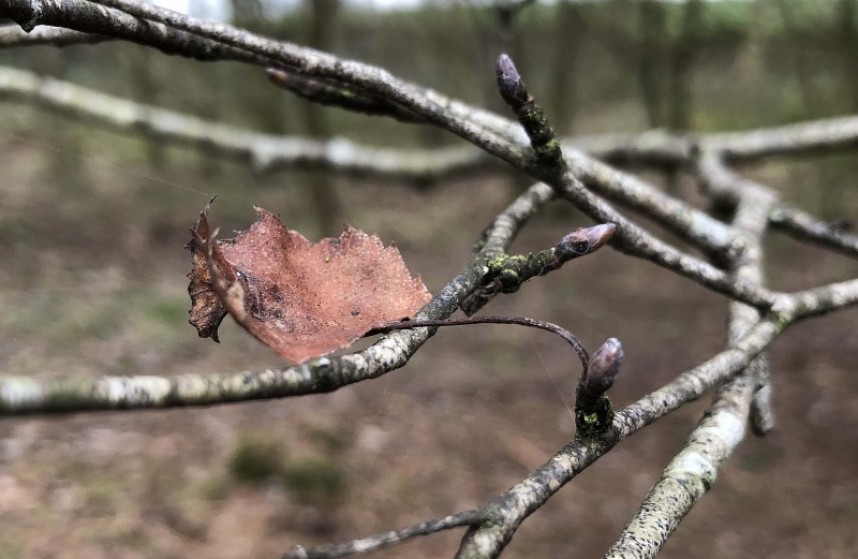
Silver Birch buds pointed and fat with an old Birch leaf © Richard Baines
Silver Birch tree buds are similar to Beech buds in structure but much shorter, they lack the long thin structure of Beech. Look out for their red-brown colouring and the pointed tip. They are arranged alternately up the stem in a gently shaped zig-zag form similar to Beech.
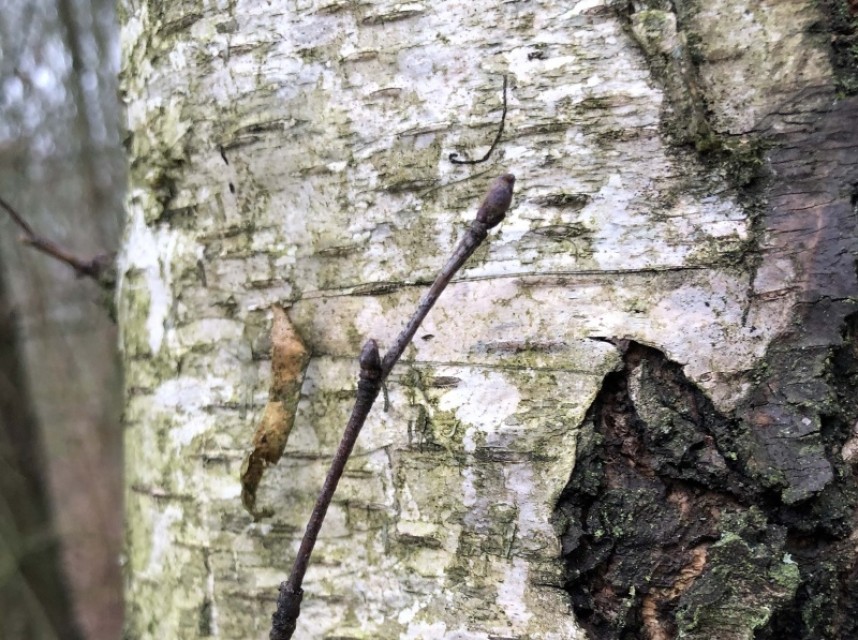
Silver Birch bark and buds © Richard Baines
Some of our best loved birds can be influenced by the species and age of trees. In England, the Nuthatch loves to build its nest in a cavity within an Oak tree and often choose a mature tree with an old natural hole. They use flakes of bark to fill the base of the hole to just the right size for their nest and plaster the entrance with mud which dries to a size just big enough for them to squeeze into.
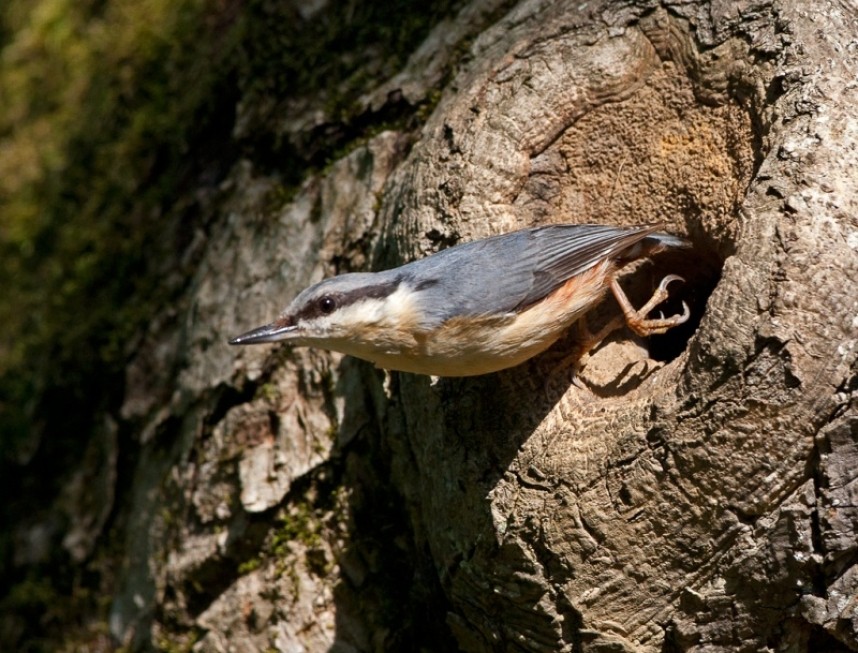
Nuthatch emerging from a nest showing the mud plastering around the entrance © Steve Race
A study in Poland found they nested in more mature trees with holes too big for their nest which they can then adjust to the right size and shape. But these were Ash and Maple trees as opposed to Oak in England. Therefore, the species of tree which is the commonest mature species within an area, growing to a large enough size to develop cavities may become a Nuthatch’s favourite. So, if you want to attract these great birds to your garden hold onto those native, large, mature and gnarled trees with lots of cracks and holes, they are often the best places for Nuthatch’s and many other forms of wildlife.
Richard Baines
Yorkshire Coast Nature



 Back to Blog
Back to Blog
